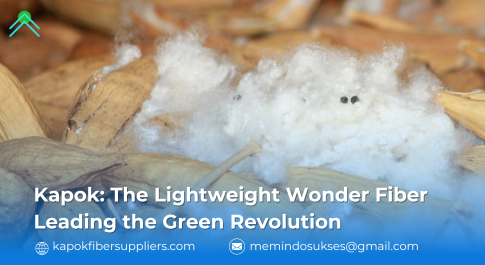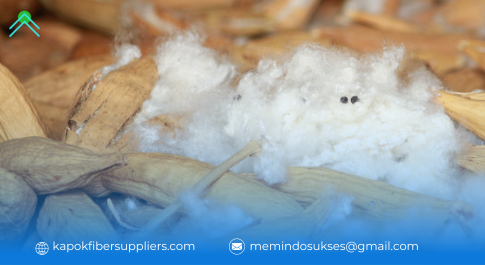
Kapok: The Lightweight Wonder Fiber Leading the Green Revolution
Sustainability is a key focus in today’s world. Nature provides many eco-friendly solutions, but some are often overlooked. One of these is kapok, a fiber from the seed pods of the Ceiba pentandra tree. Kapok is light, biodegradable, and environmentally friendly. It has the potential to replace many common materials. Let’s explore why kapok is an important part of the future.
What is Kapok?
Kapok grows inside the seed pods of the Ceiba pentandra tree, which is found in Southeast Asia and Central America. When the pods ripen, they burst open, releasing soft, fluffy fibers. These fibers are extremely light and naturally buoyant. Kapok has been used for centuries in pillows, mattresses, and even life jackets.
Kapok is harvested by hand. It is not chemically treated, making it a safe and sustainable material. It is also 100% biodegradable, meaning it decomposes naturally without harming the environment.
Why Kapok is Special
Ultra-Lightweight: Kapok is one of the lightest natural fibers. It is much lighter than cotton, making it useful in flotation devices and padding.
Naturally Buoyant: Kapok fibers trap air, allowing them to float. This makes kapok ideal for life jackets and other marine gear.
Water-Resistant: Kapok resists water, helping it maintain its shape in damp conditions. This makes it great for outdoor cushions and bedding.
Hypoallergenic: Kapok is chemical-free, making it safe for people with allergies or sensitive skin. Unlike synthetic materials, it does not release harmful chemicals.
Biodegradable: Unlike plastics and synthetic foams, kapok naturally breaks down without polluting the environment.
How Kapok is Used Today
Kapok is not just a fiber of the past—it has many modern applications. Here’s how it is shaping a greener future:
Eco-Friendly Textiles: The fashion industry is looking for sustainable alternatives to cotton and synthetics. Kapok is light, breathable, and biodegradable. Researchers are working on making kapok into fine, durable fabric for clothing and upholstery.
Sustainable Packaging: As the world moves away from plastic, kapok offers a biodegradable alternative to foam packaging. It can replace plastic fillers used in shipping, reducing waste.
Bedding and Home Furnishings: Kapok is soft, breathable, and moisture-resistant. It is a great alternative to synthetic foam in pillows and mattresses. It provides comfort while being free of harmful chemicals.
Flotation Devices and Safety Gear: Kapok has been used in life jackets for years due to its buoyancy. It is an eco-friendly alternative to synthetic materials used in marine safety equipment.
Building Insulation: Kapok has natural insulating properties. It can be used in construction to replace synthetic insulation, reducing environmental impact.
Kapok’s Environmental Benefits
Kapok is not only biodegradable—it also benefits the planet in other ways:
Carbon Sequestration: The Ceiba pentandra tree absorbs carbon dioxide, helping fight climate change.
Low Water Usage: Kapok trees grow without irrigation, unlike cotton, which requires large amounts of water.
Chemical-Free Farming: Kapok grows naturally without pesticides or fertilizers, unlike many other fiber crops.
Less Plastic Waste: Using kapok instead of synthetic materials helps reduce plastic pollution.
Challenges and the Future of Kapok
Kapok has great potential, but there are challenges. Processing kapok is more difficult than cotton, and large-scale production is still developing. However, as demand for sustainable materials grows, new innovations will make kapok easier to use.
The Future of Kapok
Kapok’s lightweight, buoyant, and biodegradable properties make it a valuable resource. It has potential in textiles, packaging, bedding, safety gear, and construction. As technology advances, kapok could play a major role in creating a greener world.
Conclusion
Kapok is one of nature’s hidden treasures. As industries move toward sustainability, kapok offers a natural, eco-friendly alternative to synthetic materials. With its many uses and environmental benefits, kapok could help shape a future where sustainability is at the heart of manufacturing.

